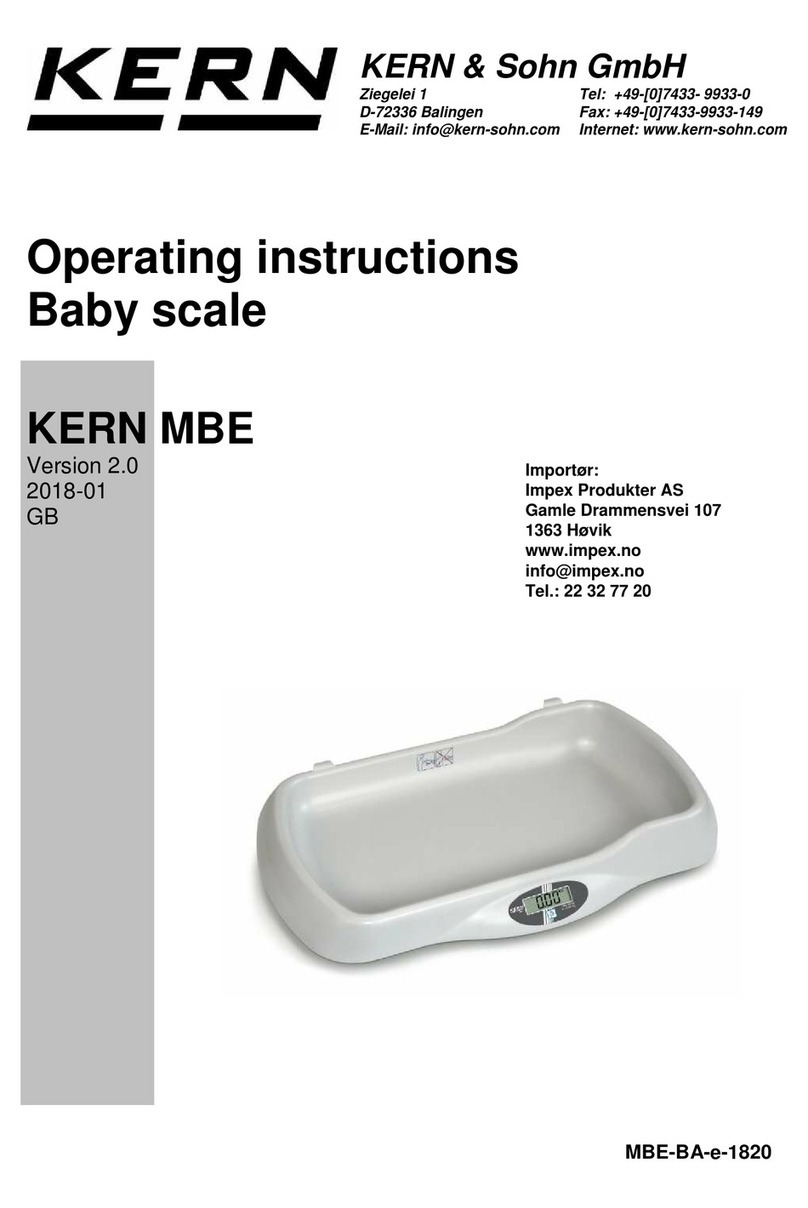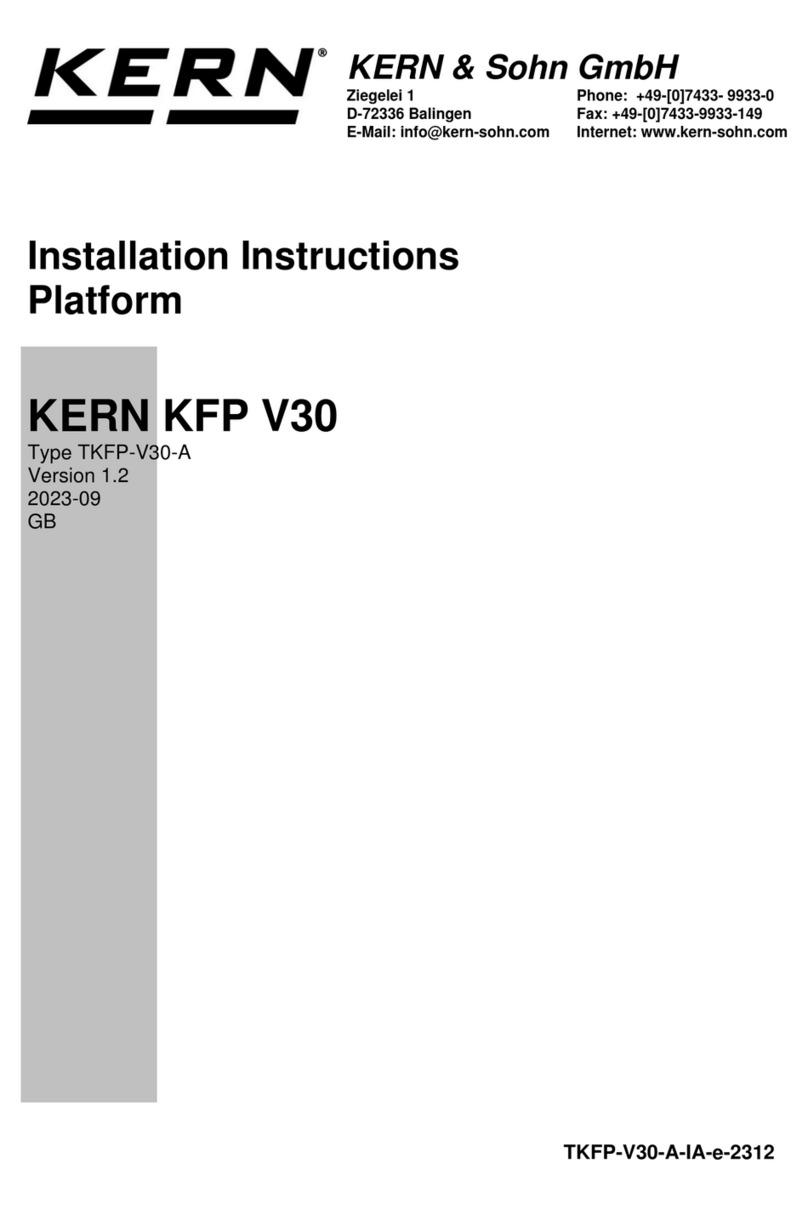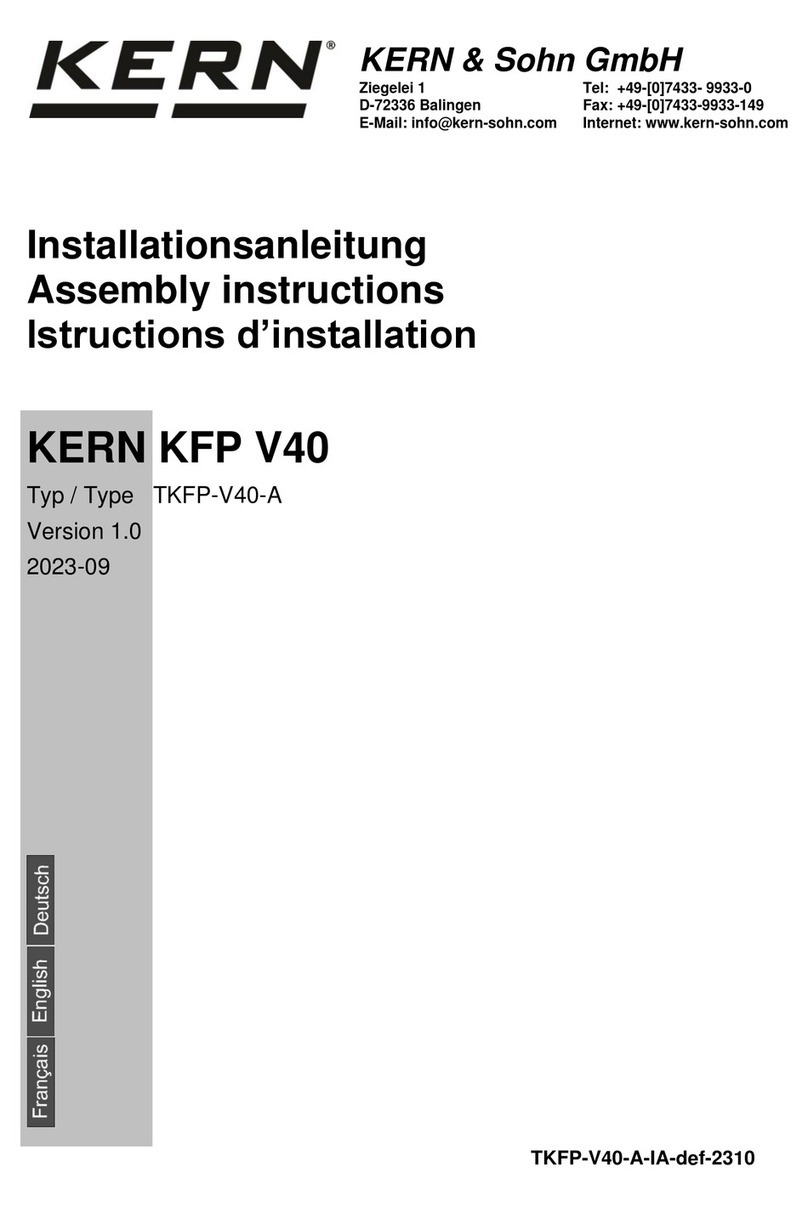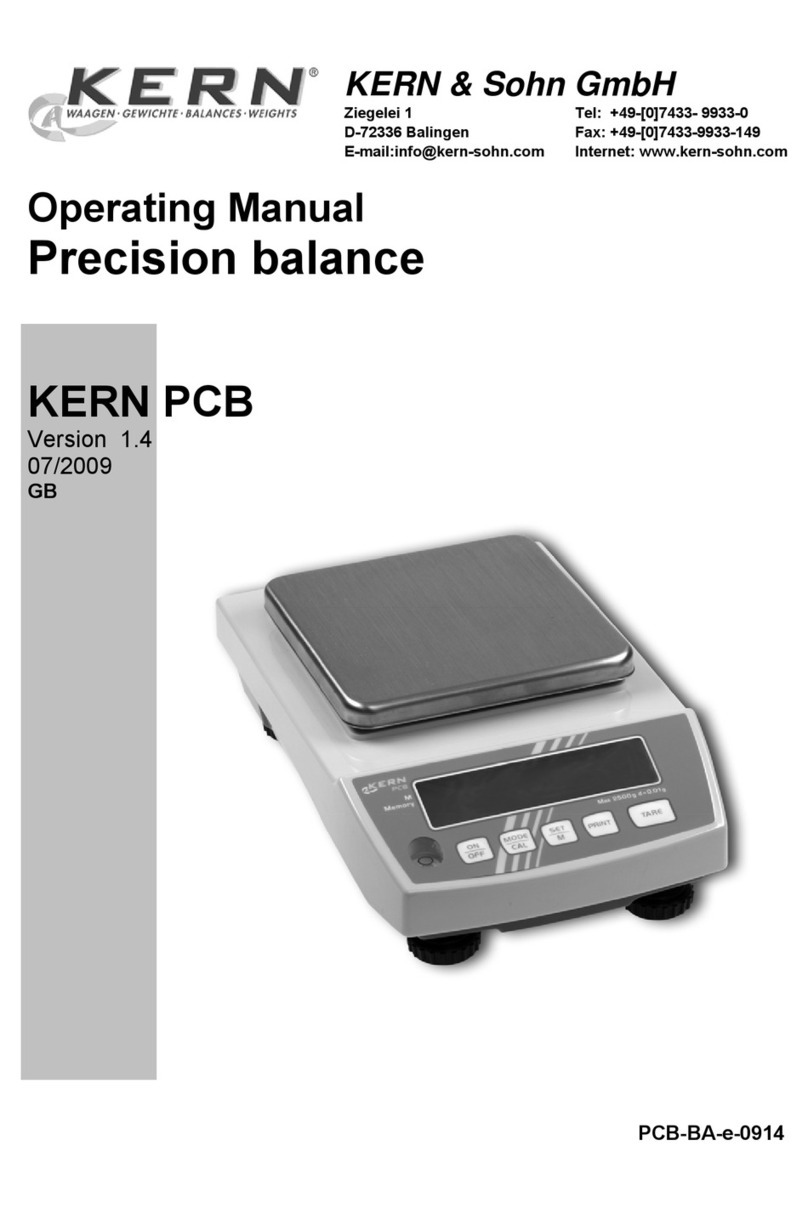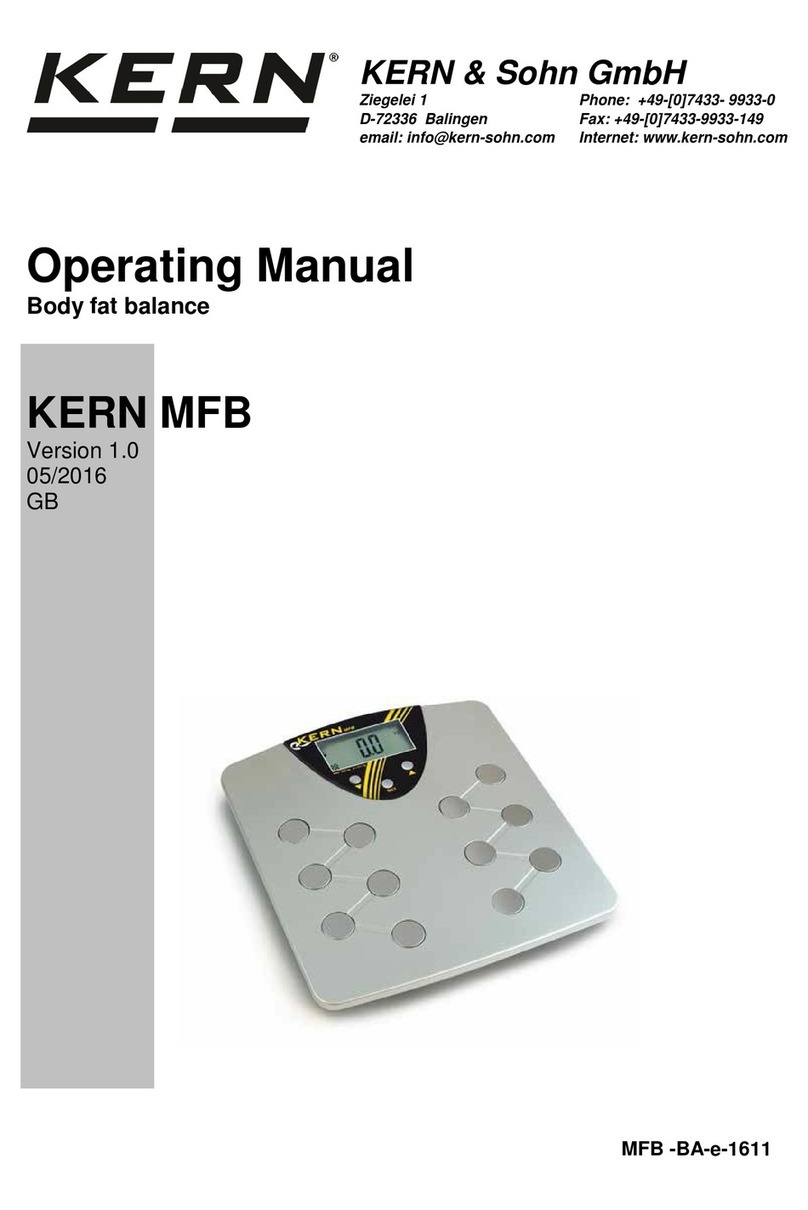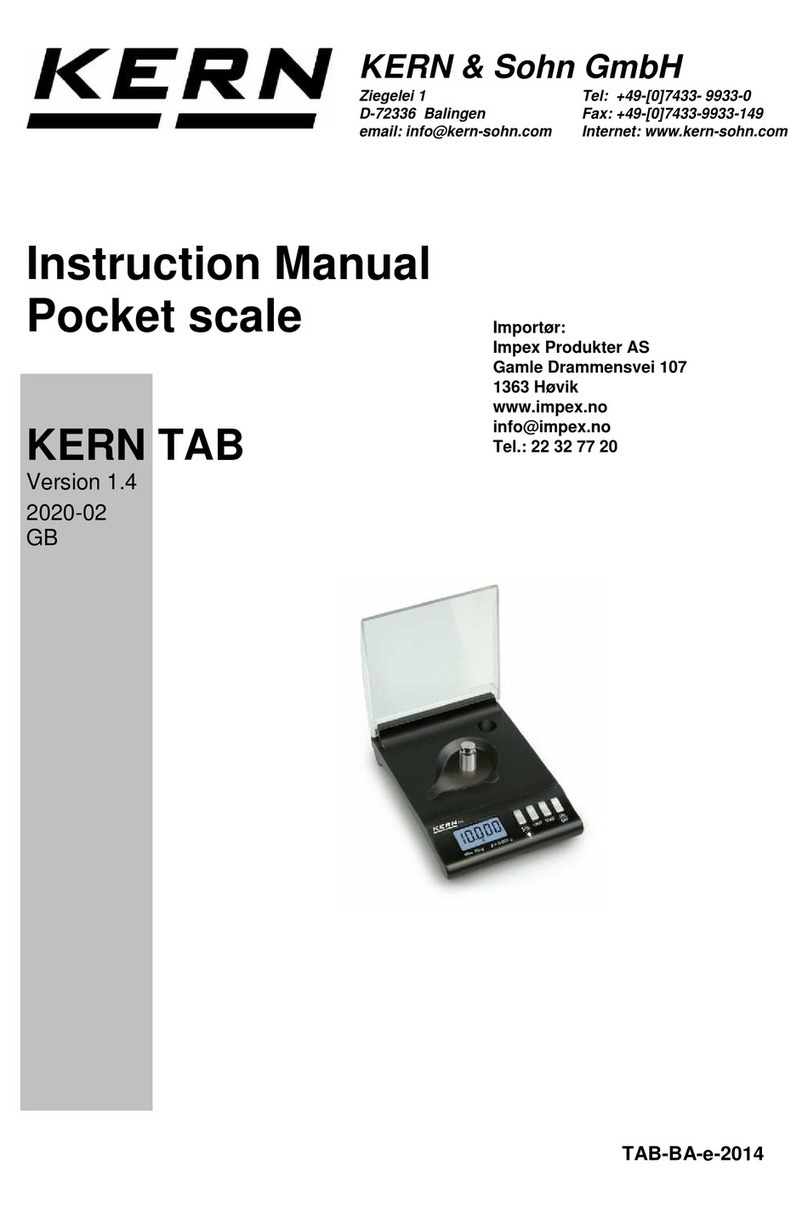
TPWS-BA-e-2210 2
14 Animal weighing .......................................................................................... 38
14.1 Additional settings ................................................................................................................. 38
14.1.1 Auto Tare.............................................................................................................................. 39
14.1.2 Data output........................................................................................................................... 39
14.1.3 Set weight range .................................................................................................................. 39
14.1.4 Set the balance's response. ................................................................................................. 39
15 Weighing with tolerance range................................................................... 40
15.1 Selection of weighing function with tolerance range ......................................................... 41
15.2 Set discrimination condition ................................................................................................. 41
15.3 Setting the discrimination range .......................................................................................... 41
15.4 Set the number of tolerance limits ....................................................................................... 41
15.5 Set discrimination method .................................................................................................... 42
15.6 Set acoustic signal ................................................................................................................. 42
15.7 Setting the tolerance values.................................................................................................. 42
15.7.1 Absolute values .................................................................................................................... 42
15.7.2 Differential values................................................................................................................. 45
15.8 Setting the display to present results .................................................................................. 49
16 Totalization................................................................................................... 50
16.1 Select the Totalizing function ............................................................................................... 50
16.2 Using the totalizing function ................................................................................................. 51
16.2.1 TOTAL-Adding ..................................................................................................................... 51
16.2.2 NET-Adding.......................................................................................................................... 51
16.3 Show or clear the total sum .................................................................................................. 52
17 Settings for operation and operating behaviour....................................... 53
17.1 Setting the weighing units..................................................................................................... 53
17.2 Bar graph display ................................................................................................................... 54
17.3 Acoustic signal ....................................................................................................................... 54
17.3.1 Activate / deactivate the acoustic signal .............................................................................. 54
17.3.2 Adjusting the sound level of the acoustic signal .................................................................. 54
17.4 Background lighting............................................................................................................... 54
17.4.1 Turn off of the background lighting automatically ................................................................ 55
17.4.2 Checking the background lighting ........................................................................................ 55
17.5 Stability settings..................................................................................................................... 55
17.5.1 Sensitivity ............................................................................................................................. 55
17.5.2 Stabilisation waiting time...................................................................................................... 55
17.6 Reaction settings.................................................................................................................... 56
17.7 Zero-Tracking.......................................................................................................................... 56
17.8 Automatic switch-on function............................................................................................... 56
18 System Settings ........................................................................................... 57
18.1 Balance identification number .............................................................................................. 57
18.2 Readability .............................................................................................................................. 58
18.2.1 Readabilities for PWS 800-2 ................................................................................................ 59
18.2.2 Readabilities for PWS 3000-1 and PWS 8000-1 ................................................................. 59
18.3 Restore last tare value ........................................................................................................... 60
18.4 Restore factory settings ........................................................................................................ 60
19 Adjustment ................................................................................................... 61
19.1 Adjustment.............................................................................................................................. 61
19.2 Adjustment test ...................................................................................................................... 62
20 Interfaces...................................................................................................... 64
20.1 RS-232C interface for data input and output ....................................................................... 64
20.1.1 Technical data ...................................................................................................................... 64
20.1.2 Interface cable...................................................................................................................... 65
20.2 Data output formats ............................................................................................................... 65
20.2.1 Data composition ................................................................................................................. 65
20.2.2 Data description ................................................................................................................... 65
20.3 Data input ................................................................................................................................ 67
20.3.1 Input format .......................................................................................................................... 67
20.4 Response formats .................................................................................................................. 69


